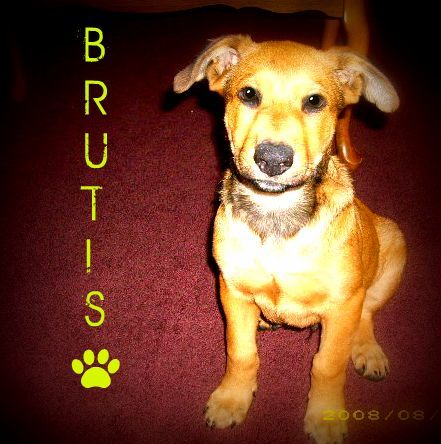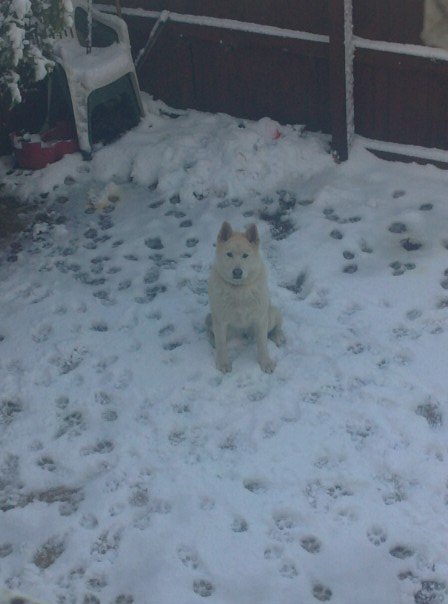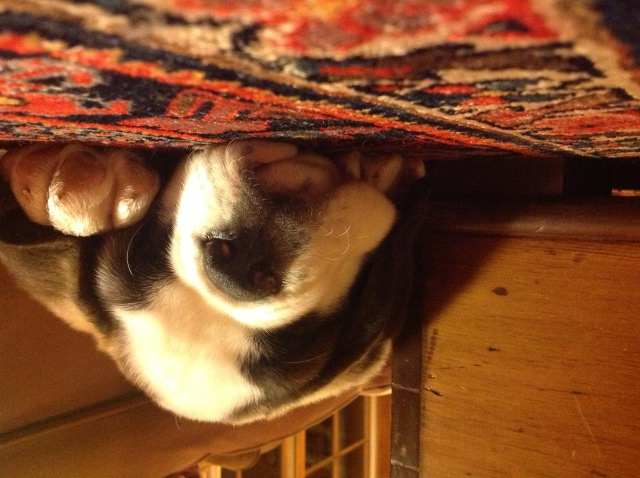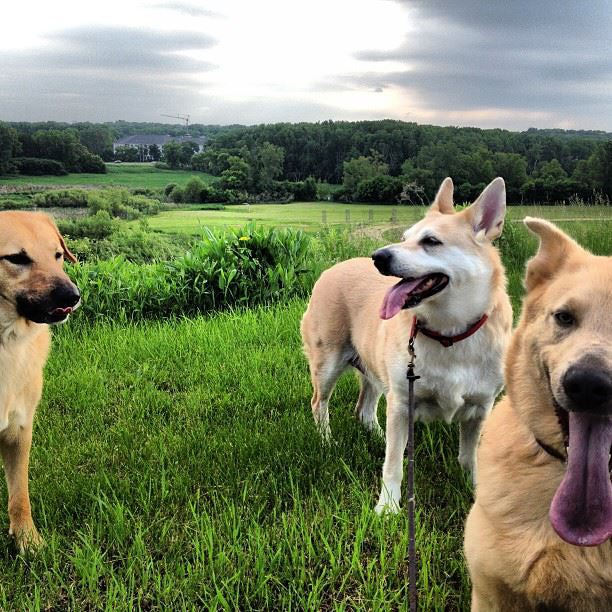QuestionQUESTION: Hello, my wife and I have 2 dogs. We have had Rylie since she was a puppy (October, 2008) and We've had Sadie since last November. She was a rescue dog, a lab mix She was about 6 months old when we got her. For the first 6 months, we were very impressed with her on how well she took to us. We were prepared for there to be a growing period as far as letting us close, but it only took a few hours and she was loving us, licking us, playing. Her and our other dog get along well, and we took them to dog parks and the beach all the time (2-3 times a week) Recently (within the last 2 months) she has developed into a very timid dog. We can't go anywhere where there are people or she will freak out. Even on walks, she pulls herself out of her leash if someone get's within 20 feet. She is an inside dog, and anytime someone walks past our door, she will just bark and bark. We've tried positive reinforcement (petting and treats) when she starts to behave this way. I was told that if you associate people walking by with a treat, she will learn to not be afraid. Sadie doesn't mind other dogs. She gets along very well with all of our friends dogs, and it seems like when there are other dogs around, it calms her, but if it's people trying to pet her, or be near her, she just tries to run away. It's gotten to the point where it's difficult for us to go on walks, or go to the beach.
I would appreciate any help you can offer. We are desperate for a fix.
Thanks
Brian
ANSWER: Hi Brian. As dogs reach social maturity (around 12 months of age), they can begin to exhibit personality changes - just like teenagers/young adults.
You're on the right track trying to use treats and positive reinforcement. The key is to keep her
under threshold . Usually this means staying at a great enough distance that she doesn't exhibit the fear symptoms. Be sure you are using the highest value treats (small tidbits of chicken, liver, cheese) and presenting them just as the "scary person" enters her line of sight - and not after she's already barking or pulling away on the leash. This may require set ups with friends that will work with you.
Here are some more details on the process:
When you see a "stranger", keep a distance and work toward changing her emotional reaction to the person. When she spots the person, tell her "good" or "yes" and feed her a really yummy treat (something small and tasty, no bigger than a pea). Each time she looks at the person, say "good" and feed a treat. It would be great if you could set this up with a friend your dog doesn't know well, but who would be willing to work with you. Remember that if she's barking or pulling away, you're too close. She should be happily seeing the stranger and redirecting her attention back to you. This teaches her that you are in control of the situation; you're not going to force her to interact unless she wants to; and she should look at you when she sees a stranger because she'll be rewarded for it. You should gradually be able to work your way closer to the stranger. But as soon as she shows signs of anxiety, back off a bit.
If you want to read more about this technique I described - looking at the stranger, then back to you for a treat - it's called "Look at That" and was developed by Leslie McDevitt and described in her book "Control Unleashed". It's often used for dogs who are reactive to other dogs, but it works for reactivity to people as well.
There's also an excellent book out called "Help for Your Fearful Dog" by Nicole Wilde. Check that out along with other great resource listings at: http://www.distinctivedogtraining.com/resources.html
This website also has wonderful first-hand information for shy dogs: www.fearfuldogs.com
Please let me know if you have any questions or comments. Good luck!
---------- FOLLOW-UP ----------
QUESTION: What do you recommend for the barking when anyone walks past our door?
AnswerDuring times of day when there is a lot of foot traffic past your house, sit in the room with her with a container of the high value treats. When a person appears, start feeding. When the person leaves her line of sight, stop feeding.
This is called the "Open Bar Technique". Bar opens when person appears; bar closes when person disappears.
If she won't take treats, make a greater distance between you and the sidewalk. Do set-ups with friends. They could start on the opposite sidewalk and gradually get closer with each pass.

 Housebreaking My Puppy and Choosing the Right Fencing
Question
Woody
Hello. I have a four month old be
Housebreaking My Puppy and Choosing the Right Fencing
Question
Woody
Hello. I have a four month old be
 dog training.
Question
Brutis
I have a 6 month old german shepherd/la
dog training.
Question
Brutis
I have a 6 month old german shepherd/la
 Dog Training And Punishment?
Question
Maya
hi there i have an akita X husky,
Dog Training And Punishment?
Question
Maya
hi there i have an akita X husky,
 puppy is shy - is this a deal breaker?
Question
Our baby!
Hi there - First of all, tha
puppy is shy - is this a deal breaker?
Question
Our baby!
Hi there - First of all, tha
 traumatic
QuestionI have a 6 lb Yorkie that is a rescue, weve had
traumatic
QuestionI have a 6 lb Yorkie that is a rescue, weve had